
 HOVEM INTERVIEW CEO, ACCELERATOR
HOVEM INTERVIEW CEO, ACCELERATOR
MEET NIXU – A DNV COMPANY MEET ÅKERBLÅ – A DNV COMPANY VEFF – THE DNV EMPLOYEE ASSOCIATION VEFF MAGAZINE 2024 VEFF//24
will soon end a good strategy period with several solid acquisitions
DNV
LIV
The VEFF magazine is produced by employees in DNV and sponsored by VEFF union, which is a union for DNV employees.
© VEFF 6–2024
Editor: Nina Ivarsen
Front cover photo: Nixucom
Back cover photo: Nina Ivarsen
Design and print: Aksell
DNV’s strategic goals and plans for the rest of the year and new strategy period 2024 a year of collaboration
In this strategy period (2021-2024), DNV has acquired 15 companies.
NINA IVARSEN, CHAIR VEFF
The strategy period we are now in has been very profitable and we have grown far more than expected both in-organically and organically. We have many new employees who have been integrated into our organization. Some are fully integrated, and some have a longer harmonization period. The most important resource to take care of is our company’s culture. In this fourth year of our five-year strategy period, DNV have more than 15,000 employees.
These new acquisitions have created platforms for accelerated organic growth in new service areas, such as cyber security and digital health. They are also bolstering our market positions in service areas, such as energy management, aquaculture, and certification of medical devices and of management systems. Such in-organic growth is an important part of our strategy and our ambition to shape the future of assurance.
“While instability and uncertainty continued to weigh on global markets and geopolitical con-ditions in 2023, resilience and growth were key features of DNV and our people”. Remi Eriksen, Group President and CEO.

I EDITORIAL I
2
2
Nina Ivarsen, Chair VEFF
DNV delivered record-high
revenues of over 31 billion NOK in 2023, representing growth of 17.7% adjusted for currency fluctuations.
Maritime recorded revenues of NOK 11,013 million in 2023, corresponding to growth of 28.5% compared to 2022. The classification business model has continued to be resilient to geopoliti-cal events, wars, and other global shocks and adverse developments throughout the year.
Energy Systems reported revenues of NOK 11,039 million in 2023, representing growth of 18.9% compared to 2022, supported by external renewable market developments, a strong focus on growth together with global key customers, as well as the acquisition of Houston-based Software as a Service company ANB Systems and Dublin-based environmental and sustainability consultan-cy company Enviroguide Consulting.
Digital Solutions realized growth of 17.5% compared to 2022 and delivered revenues of NOK 1,468 million in 2023.
Business Assurance reported revenues of NOK 3,700 million in 2023, which represents growth of 25.1% compared to 2022, driven by strong growth of the certification business.
Supply Chain & Product Assurance delivered revenue of NOK 2,041 million in 2023, which shows growth of 40.5% compared to 2022, supported by the acquisition of Norway-headquartered marine health company Åkerblå Group as well as strong operational performance from most geographies.
The Accelerator recorded revenues of NOK 2,210 million in 2023, achieving 58.6% growth com-pared to 2022, driven by the acquisition of the largest Nordic cyber security company, Nixu, which has brought additional business volume into the portfolio, in addition to strong year-on-year growth of the Inspection business.
Reference: DNV
In the energy industry, we’ve taken important steps towards becoming a leading and fully-fledged provider of solar energy plant optimization.
Improving energy efficiency not only helps reduce energy costs but also has environmental benefits, such as reducing greenhouse gas emissions and mitigating climate change. It is an important aspect of sustainable development and plays a crucial role in transitioning to a more sustainable and resilient energy system. By adopting energy-efficient practices and technologies, individuals and organizations can contribute to a more sustainable future while also reaping the financial benefits of reduced energy consumption.
DNV Creates European Cyber Security Services Powerhouse Through Merger with Nixu and Applied Risk
Nixu Corporation
Knowledge-Based Ocean Health – Åkerblå Group AS
DNV has Entered into an Agreement to Acquire Åkerblå Group
DNV’s Acquisition of Imatis AS 20 Untapped and Underestimated: Workforce that has Different Cultural Backgrounds
22 Competitive Drivers – Navigating the Intersection of Green, Tech, and Innovation 24 Tech Advancement – Technology is a powerful ally 25 Individual Choice – The rise of Career Consumerism
Catalyst for Innovation and Creativity
Workplace Culture – Trust and Innovation 30 Human Rights Due Diligence: The Global Compact’s Ten Principles on Human Rights 32 Navigating Human Potential and Advanced Technology 35 Trends Driving the Age of Adaptability 36 The Manager Mandate – Mastering Continuous Transformation and the REAL Model 38 A Strategic Discussion on Where to Employ People 40 Facts and History – Tariff Agreements
42 Why the Present – and Future –Workforce will be Female-fueled 43 Membership benefits
2 I CONTENTS I EDITORIAL 8
14
14
Liv Hovem Interview
16
17
18
26
28
© iStock
3
Efficiency is very much the common theme among the companies we’ve brought into DNV over the past year. This include Solcast, Proxima Solutions, and ANB Systems. We’ve also expanded our biodiversity services portfolio with the acquisition of Enviroguide Consulting.
Medical technologies, life sciences, and aquaculture are also key areas for strategic growth for DNV – and key to fulfilling our purpose of safeguarding life, property, and the environment in this decade of transformations.

One of the key benefits of digital healthcare is increased access to healthcare services, especially for individuals in remote or underserved areas. Patients can consult with healthcare providers, receive medical advice, and even undergo diagnostic tests without having to travel to a physical healthcare facility. This can be particularly beneficial for individuals with mobility issues, chronic conditions, or limited access to healthcare services. Digital healthcare also enables more efficient and cost-effective healthcare delivery. By leveraging technology to streamline processes, reduce administrative burdens, and improve communication between healthcare providers and patients, healthcare organizations can enhance the quality of care while reducing operational costs. Despite its numerous benefits, digital healthcare also presents challenges, such as ensuring data security and privacy, addressing disparities in access to technology, and maintaining the human touch in healthcare delivery.
Our digital health portfolio now includes MBI Healthcare Technologies and DNV Imatis, which complement and support our existing medical and healthcare services across four business areas. Our growth in this space will drive solutions to improve patient safety and safely accelerate the digitalization of healthcare.
The acquisition of Åkerblå Group last year was a significant boost to DNV’s life sciences and aquaculture service offering.
We can now offer our customers end-toend services in the aquaculture value chain. Building a leading position in this industry is important as our own research shows aquaculture is a critical industry for ensuring food security.
From the 1st of January this year, Nixu, DNV and Applied Risk have been operating as one team named DNV Cyber.
We are creating one of Europe’s fastest-growing cyber security businesses because without a robust approach to cyber security, our customers cannot truly capture the benefits of digitalization and automation. Cyber security is an enabler of success rather than just a cost of doing business.
One DNV going forward.
“Most likely, the strategy will be more dynamic since the geopolitical situation is changing much faster than in previous years. What we need are some good pillars that apply to the whole company.
We must collaborate across business areas and across regions to bring all DNV’s experience and expertise to our customers. Giving our customers easy access to our full range of services unlocks more value for them, and more growth opportunities for us.
We must also ensure that the many new colleagues that will continue to join us through recruitment and acquisitions feel quickly and warmly welcomed into One DNV and encouraged to collaborate with their colleagues across the company.
“As we look ahead to the future, it is imperative that we adapt and evolve to meet the challenges and opportunities that lie ahead in the global landscape.” Remi Eriksen, Group President and CEO.
I EDITORIAL I
© iStock 4

Our strategy for 2025 will build upon a foundation of innovation, collaboration, and foresight, says Nina Ivarsen.
Floating wind is an emerging industry with a lot of growth opportunities for DNV. Therefore, it has been important to take a position on how DNV can best create value for our customers and position itself at all stages of the work to bring down the costs and speed up the industrialization of floating wind. Service delivery will be by both Maritime and Energy Systems, and a new Global Segment Director role for floating wind is being established.
A current example of collaboration is the DNV go-to-market approach for
floating wind. To serve our customers and the industry in the best possible way, DNV are combining our experience from classifi-cation of floating assets and certification of offshore wind into one 3rd party assurance service for floating wind.
It will be designed to position us as a key player in the ever-changing geopolitical arena, allowing us to navigate and tackle complexities and uncertainties with confidence, trust, and agility.
The GEF meeting was held in Høvik in April, and Remi Eriksen joined us for the whole morning. He went through several of the topics mentioned earlier in this article and in addition we dis-
cussed a lot the current strategy and a lot of aspects that could become part of our next strategy. It is important to take care of the good things we have achieved in the strategy we are in today.
Rune Torhaug, Director of EU Government and Public Affairs gave GEF a summary of how today's strategy was shaped, both with a view on how the world views DNV and our contributions, as well as how we see ourselves.
Gro Gotteberg, Chief People Officer went through the people side of the business, and we got a nice update on DNV branding "You are in the heart of it".
Global Employee Forum met on the 18th of April and together with Group CEO and President Remi Eriksen, important strategic questions were discussed.
I EDITORIAL I
© iStock 5
Some of the topics we also discussed at the GEF meeting were:
Market Expansion
We will identify new markets and regions and geographies for expansion, leveraging our strengths and capabilities to establish a strong presence and drive growth.
Partnerships and Alliances
We will build on strategic partnerships and alliances with key customers, stakeholders, governments, and organizations to enhance our influence and reach on the global stage. We will also be more visible on the global arena and take a stand in foresight and research.
Technology and Innovation
We will prioritize investment in cutting-edge technologies, assurance, and innovation to stay ahead of the curve and drive sustainable growth in a rapidly evolving geopolitical landscape. We will need to decide where we want to invest and were to be trusted champions.
Sustainability and Social Responsibility
We will integrate sustainability, diversity, and social responsibility into our strategy, aligning our actions with our values and commitment to making a positive impact on the world. Our purpose will always remain the same, and so will our admiration for our employees and colleagues –together, we will be safeguarding life, property, and the environment.
Risk Management and Resilience
We will enhance our risk management capabilities and build resilience and assurance to tackle geopolitical uncertainties and disruptions effectively as a trusted partner.
As Chair of VEFF, I am confident that our new strategy will position us together for success and enable us to seize opportunities for growth and impact in the years to come.
2024 is DNV’s 160th anniversary
For 160 years, we have remained relevant guided by our purpose and strong strategic foresight. As we are getting closer to the end of our current strategy period, work is underway to shape the next strategy.
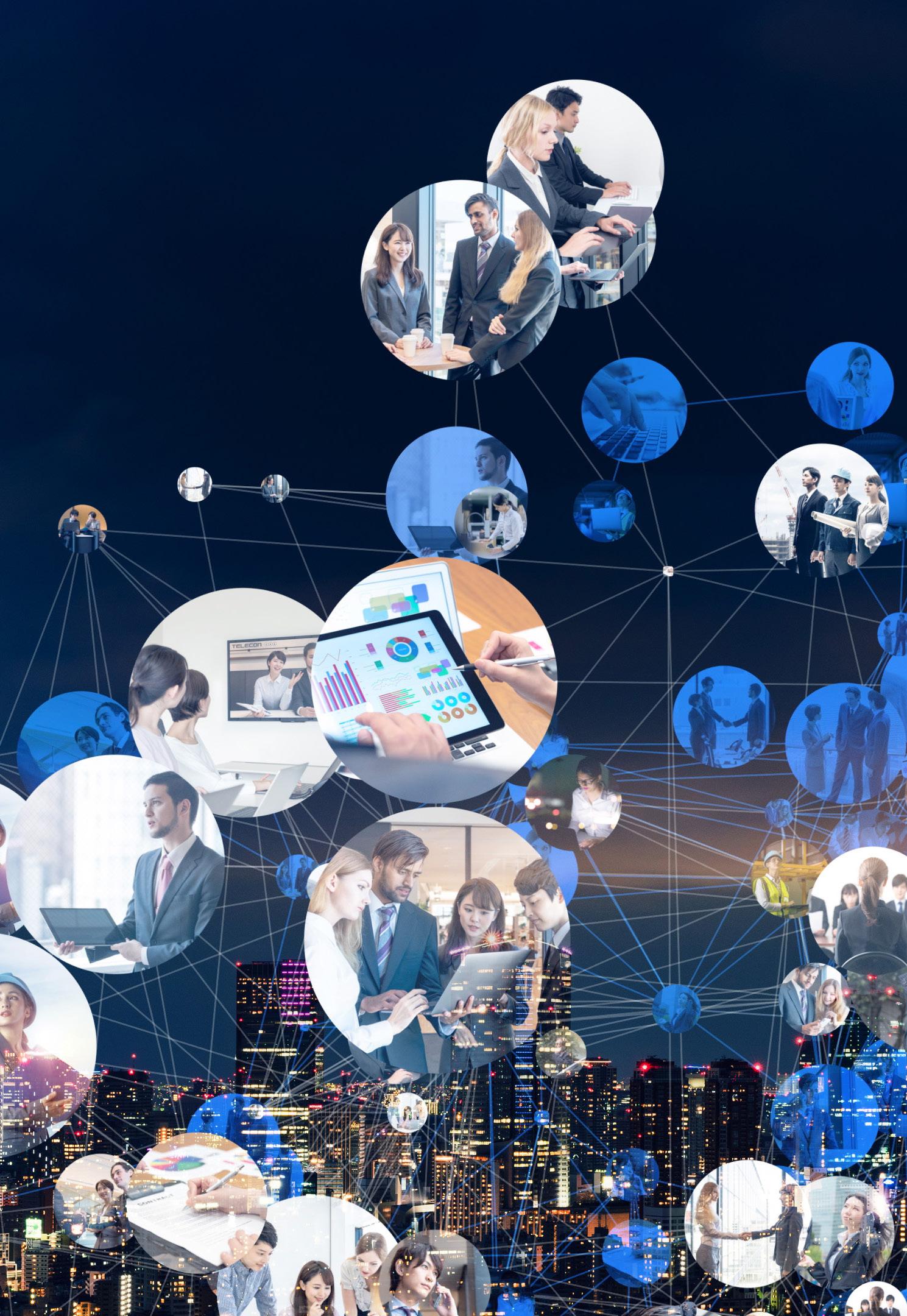
Through our 160-year history, our people and their deep technical expertise have been our greatest asset. DNV has significantly strengthened its position as a trusted voice to help its customers manage the risks and opportunities that come with accelerated decarbonization and digitalization.
I highly advice you to watch DNV's history film showing DNV’s heritage since 1864.
"It’s time to celebrate our history and acknowledge the impact we make by safeguarding life, property, and the environment".
I EDITORIAL I
6

GEF (Global Employee Forum) representatives 2024
Representatives of Norway Employee Forum
• Norway - Nina Ivarsen, Chairperson of GEF
Representatives of the Americas and Africas employee forum (AmEF)
• United States - Heather Lovecloud
• Mexico Angelica - Yolanda Garcia
Representatives of the Asia, Pacific and Middle East employee forum (AsEF)
• Greater China (Taiwan) - Xin Yun Charles Li
• Republic of Korea - Jong Chun Kim
• Singapore - Jerome Foo
Representatives of the European Work Council (EWC)
• Poland / Denmark - Adam Niklewski
• Sweden / Germany - Maria Bylund
• Spain / Norway - Noemi Corbatón
Sources
- Global Employee Forum meeting with Group CEO and President Remi Eriksen, Gro Gotteberg, Rune Torhaug.
- DNV Intranet News Published 17/04/2024. - https://www.dnv.com/annualreport/index
I EDITORIAL I
© iStock 7
Liv Hovem Interview
Chief Executive Officer, Accelerator
TEXT: LIN B. KARSTEN
Introduction Liv Hovem
Throughout my career, I have focused on how DNV can benefit from the synergies between our service lines and our competencies within the industries we operate in. I have also been involved in research and development work directed toward creating rules and regulations that support industry.
My leadership experience includes strategy, innovation and growth, leading through change, and organizational development. I am inspired by the fact that we work in a company with a longterm perspective, high ambitions and a clear meaningful purpose, while focusing on commercial progress, results and financial performance.
Ultimately, however, we are a ‘people company’ with so much potential still untapped; I wish to contribute to unleashing this potential.
Can you tell us how and why Accelerator was established?
The Accelerator was established as a business area in 2021. Its purpose to rapidly grow the company’s footprint in strategically important markets and services for DNV in the future. We are actively using acquisitions and partnerships as a vehicle to achieve such growth. We were established in 2021 and have three businesses in our portfolio, all of which are progressing well to reach their 2025 growth targets:
Inspection: Assuring the quality of assets and supply chains across the lifecycle of industrial projects
Cyber Security: Safeguarding demanding IT and industrial control system environments and building business resilience.
Digital Health: Empowering healthcare providers to tackle rising costs, staff shortages and demand for care, while improving patient safety and assuring an efficient digital transformation
Can you say a few words about what differentiates DNV’s Ventures team from Accelerator?
The Ventures team makes investments in businesses that are in the earlier stages of growth. DNV’s investment in these businesses allows us to get involved learn about the technologies and markets that they are involved with in early phases. Venture investments are risk-exposed, so DNV takes a smaller share of these companies when investing.
The Accelerator’s mandate is to scale DNV’s position in markets and services that DNV is taking a strategic decision to rapidly grow within. We use acquisitions and partnerships as a method to generate quick growth, and we preferably focus acquiring more established companies who are in the phase of growth beyond start-up. Our attention is on
companies that have a proven and scaling business, with customers buying their services and solutions, and we preferably take majority ownership of these companies to have full control and consolidate the numbers into our accounts.

Both the Accelerator business area and DNV’s Ventures unit were established as muscles for the company’s growth into new markets, services, technologies, and business models. But each unit focuses on different stages of innovation and growth.
8
A venture investment can turn into a full acquisition if it turns out to be successful. We collaborate very well with Venture team.
Accelerator today and thoughts related to new strategy from 2025. Are there any changes and if you can say a few words about?
It is too early to anticipate changes, and we are currently busy delivering on the existing strategies of our Inspection, Cyber Security and Digital Health businesses. Having said that, we are currently doing some preparatory strategy work for the next stage of growth in the Inspection business unit and to establish DNV’s potential future position for DNV in the healthcare sector.
In recent years we have been evaluating additional ways to grow the Inspection business by assessing whether the business could grow faster through investment from external partners. We have opened ourselves up to several options during the process, from exploring joint venture opportunities to assessing the potential of a new owner for the business.
We have concluded that Inspection will continue to form an important part of DNV’s portfolio of businesses. The
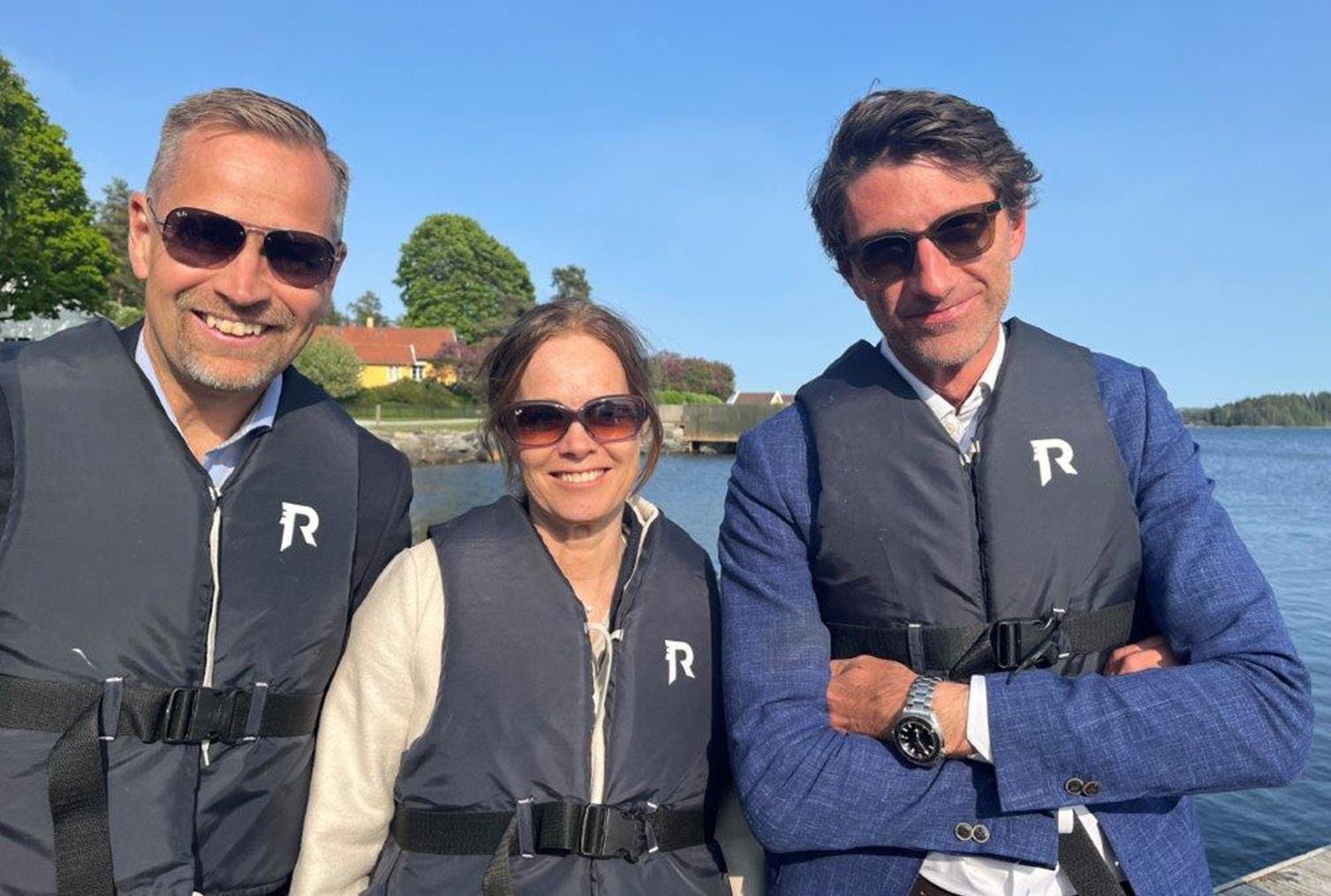
Our work on establishing DNV’s potential future position in the healthcare sector is based on the fact that healthcare systems across the world are becoming unsustainable. The cost of healthcare delivery is rising as populations live longer, unhealthier lives, and as demand for care outpaces supply of clinicians.
Inspection Leadership Team, Accelerator Executive Leadership Team, and Group Strategy Team have begun planning the next phase of Inspection’s growth, covering topics such as operational model and efficiencies, new geographies, markets, and services, as well as potential operational and strategic investments.
Governments and healthcare providers are under pressure to improve patient outcomes, while delivering more efficient, secure, and cost-effective treatment. From a point of slow departure, we believe that the transformation of healthcare will evolve and accelerate out of necessity in the next decade, creating growing demand for a broader range of assurance solutions.
Having extensively evaluated the market and engaged with several potential investors and partners, we have learned that DNV is in a great position to continue developing Inspection. Our strong brand, purpose, vision, global presence, and our success the recent years in bringing leaner systems and governance to this business all contribute to this position.
Considering DNV’s vision to be a trusted voice to tackle global transformations, the transformation of a sector as large and complex as healthcare is attractive. DNV has operated in the healthcare sector for more than 30 years with a recently expanding portfolio of accreditation, verification and digital solutions delivered to healthcare providers from the Supply Chain and Product Assurance (SCPA), Business Assurance and Accelerator business areas. Our Healthcare Research Programme (GRD) brings additional insight into the digital and infrastructure needs, legal and regulatory challenges, and gaps in trust that create obstacles to the sector’s transformation.
9
Teemu Salmi, CEO DNV Cyber, Liv Hovem and Johan Folkunger, CEO DNV Imatis
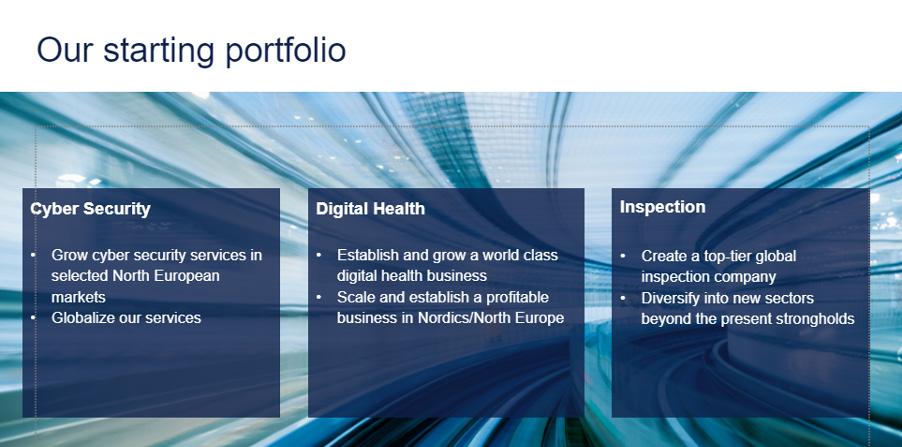
The position that DNV has built gives us access to a unique blend of healthcare providers in several countries, industry associations, standard-setters, and regulatory bodies. This positions us well to shape the future of healthcare’s transformation through a portfolio of secondand third-party assurance services and digital solutions. We have recently established a cross-BA lighthouse programme that will provide input to DNV’s 2030 Strategy by assessing the development of healthcare transformation in selected markets. It will identify assurance propositions that DNV may take to enable transformation, and pinpoint organic and inorganic routes that the company may follow to accelerate strategic growth in the healthcare sector.


I believe the Accelerator will continue to be a muscle for growing and strengthening DNV’s positions for the future. There will always be new things arising, and we have gained experience in both sourcing companies, buying companies and bringing them in which will be useful for capturing new opportunities.
10
Can you say a few words about the set-up of BAs we have today, and whether what you do will be able to influence this in the new strategy period?
I think a lot will become clearer during the DNV Group strategy project for 2026-2030 that will be kicked off later this year. I do hope, however, that what we have created and are creating in the Accelerator will form a basis for rapid growth also in the years to come. But we do need to remind ourselves time and again that Rome wasn’t built in a day…
Can you say a few words about our Cyber Security business? They're inside the Accelerator, right?
Cyber Security is at the heart of DNV’s growth strategy. The risks that
our customers now face is no longer physical – they’re cyber-physical. So DNV cannot live its purpose of safeguarding life, property, and the environment without addressing our customers cyber security needs.
We started our growth journey in cyber security when the Accelerator was established in 2021. We began with a fantastic
team of about 25 industrial cyber security experts based in Høvik and Trondheim and very high growth ambitions. When scaling a business, you’re faced with three growth options – you can build it yourself, borrow capabilities through partnerships, or buy a position through acquisitions. We are growing this business through acquisitions because it is the quickest approach to gaining a large footprint quickly. By the end of 2021 we had acquired Amsterdam-headquartered industrial cyber security firm Applied Risk, bringing the size of the team up to about 80 people. Last year, we finalized a deal to acquire one of the largest cyber security services companies in the Nordics, Helsinki-headquartered Nixu. Together, the three businesses now have more than 500 cyber security experts operating in 11 countries, providing enough scale to integrate them into one business.
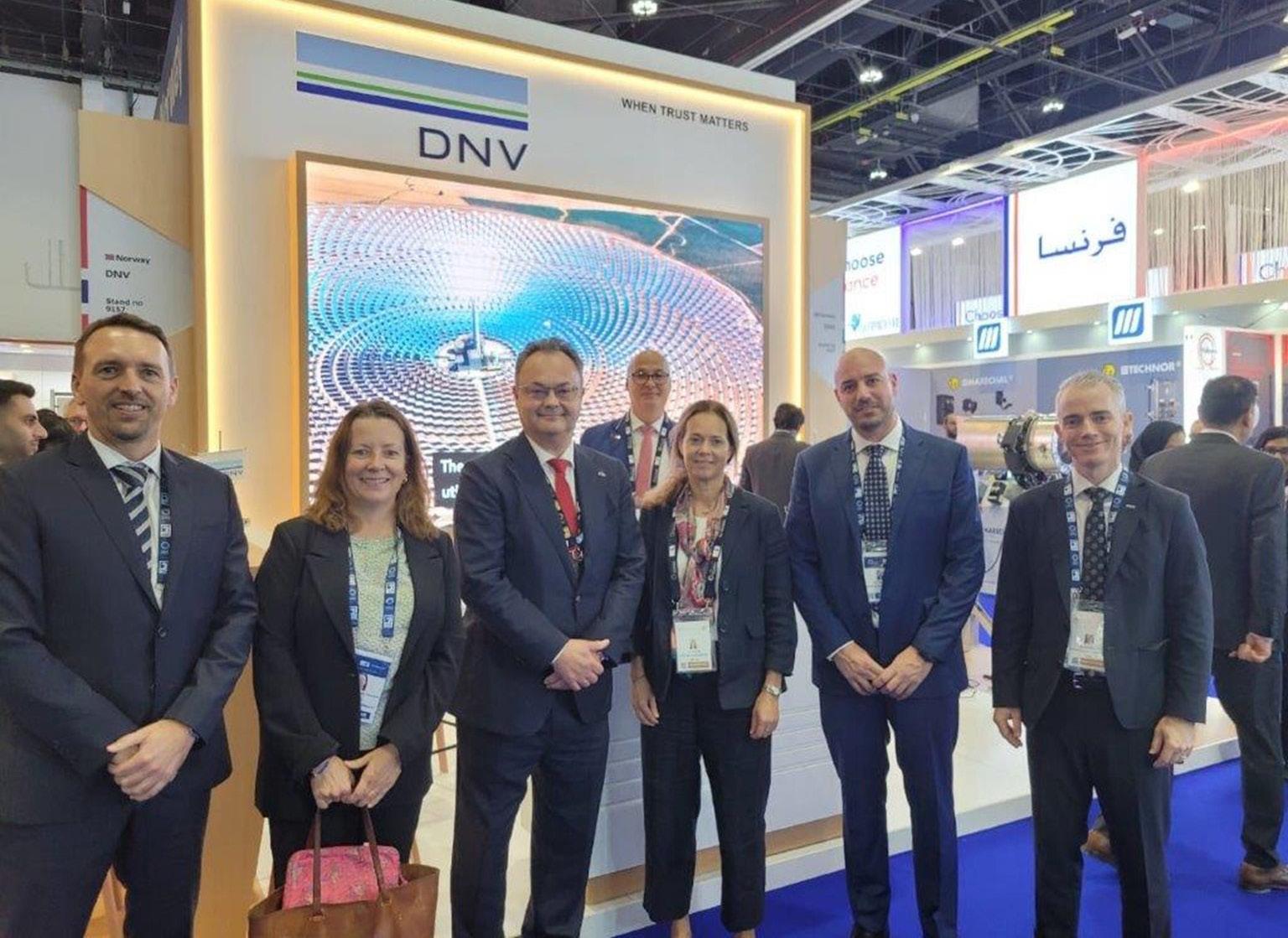
11
Cross BA at Adipec with colleagues from Energy Systems, Maritime and DNV Inspection together with the Norwegian Ambassador to UAE.
DNV’s cyber security business, Applied Risk and Nixu have been operating as one organization - DNV Cyber - under common management lead by CEO Teemu Salmi (previously CEO of Nixu) from January 2024.
With the launch of DNV Cyber we position ourselves as technical experts with industry domain knowledge, a broad service portfolio and a combination of IT and operational technology (OT) capabilities that few can match. Combined with strong operational focus, we remain confident in the long-term development of this business.
Our cyber security thought leadership position continues to strengthen with coverage of our leaders and experts in tier 1 cyber security, IT, energy, and maritime trade publications. In addition, our cyber security managers and experts have presented at several industry conferences in the first five months of the year. Our marketing campaigns so far this year have focused on three important issues facing the European cyber security market: NIS 2 compliance, cyber security awareness training and managed services.
As we target growth for DNV Cyber, we are mindful to do this in a sustainable
way, balancing integration activities with prioritized focus on sales and delivery. We actively seek feedback from employees through a change management communication program including regular Pulse survey measurements and I am happy to see that staff retention in the part of the business originating from Nixu has improved since the merger with DNV.
You've had many fantastic jobs in DNV, but does this top it?
I think perhaps this is the position I've held that suits my personality best and where I can use all the learnings from earlier in my career. It is a very creative and strategic position with a fair amount of complexity. M&A is very much a people business and developing relationships and trust with investors, sellers, founders, leaders, and new colleagues is important before difficult discussions and decisions are made. It is very valuable to have the experiences from my previous roles and to stand solid in DNV’s culture. This is probably also the job where I have spent the most time thinking and talking with people about finding ways to make things happen.
I am also very pleased with the fantastic people in the Accelerator and the businesses in our portfolio. I really enjoy working with them; the flexibility, solution oriented ‘can do approach’, humor and dedication. My aim is to build a psychologically safe working environment where people can be themselves and voice their opinions. We are not done, but I hope we take some steps every day. This is important because we need new perspectives as we develop and are completely dependent on the bright minds around us including new colleagues from acquired companies to achieve the success we strive for.
Most of all this job is very exciting and we can spend long hours and efforts on projects that we don’t see materialize – particularly with acquisitions. This is either because the companies end up being too expensive or because they turn out to be not as good as we hoped.
Can you say a few words about the collaboration with the other business areas in DNV?
The collaboration with the other BAs is very good and continuously developing. For example, we are working closely with Energy Systems’ KAM network to pitch our cyber security services to customers in the energy sector. BA Maritime are also very proactive and have for a long time positioned cyber security as an important topic for the maritime industry.
With SCPA, we have many common areas, and cover some of the same markets. We support each other in customer meetings, sourcing companies, integration, and strategy development. Similar with Business Assurance and Digital Solutions.
I also reach out to my BA CEO colleagues whenever I need to spar on specific topics. I am very grateful for the support and backing I get from my colleagues in EC but also everywhere else in our organization. I appreciate all the support and backing we get, and this One DNV feeling is good to have with me in my daily work.
Can you say something about how the employees who are now integrated in DNV are enjoying themselves? How has the process been?
I think that with any change process that involves uncertainty there are emotions involved. We try to have good change communication programs to address uncertainty, but know regardless of this,
12
there will be ups and downs and many questions we don’t always know the answer to. I also know that it is easier to integrate when we are busy in the market and have focus on customers.
I think that, over time, when people see the breadth and depth of DNV they will, like myself, increasingly enjoy being part of our great 160-year-old company!
How and who works with the branding of the companies we have acquired and will integrate?
It is a collaboration between acquired companies, the Accelerator and Group, who are very helpful and instrumental in all the branding work that we do. Branding requires a lot of work and alignment. We sometime use consultants and agencies to help us find a good framework to work from. We have just re-branded the acquired digital health
In DNV Cyber, the near-term focus is on growing sales with an initiative to double the size of the integrated business’ opportunity funnel. In Inspection we are focusing on delivering this year’s annual plan and planning the next phase of Inspection’s growth.
company in England, ‘MBI Health’ using external and internal resources and we will launch the new brand DNV Cyber towards the end of this year. It will be an exciting journey. We need to strengthen DNV’s brand and thought leadership position within all the businesses in the Accelerator to make the markets aware of our new positions and to differentiate us from the competition.
Are there any new mergers and acquisitions going on that you can share something about?
Within Digital Health we are actively hunting for new opportunities. We look at several companies every week. The Digital Health team works closely with the M&A team in Group on this mission. In general, we can say that there are smaller or larger ongoing processes all the time. We mobilized significantly dur-
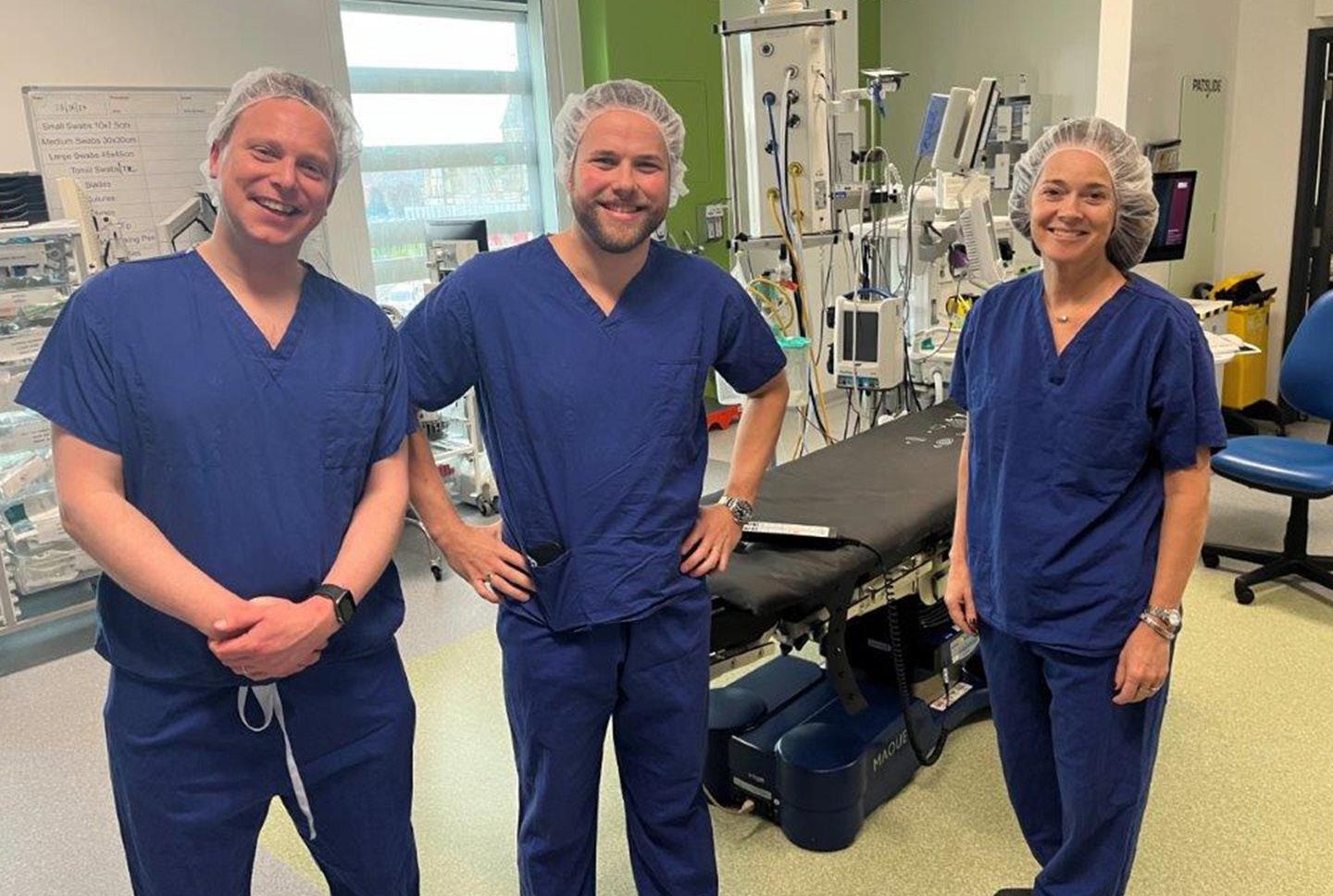
ing Easter, for example, to work on making a bid for a large digital health company. But it was snapped up by another investor right in front of our noses over the Easter weekend. It was a disappointment, but that's how it is in this game.
Can you say a few words about financial status?
Accelerator is targeting external revenue of NOK 2.9 billion and EBIT of NOK 12 million before profit share and including integration costs for 2024. Even though the latest forecast indicates this to be a stretch considering YTD performance and near-term outlook for our Cyber Security business, our ambition is still to achieve the target for the year.
Inspection is progressing well on the strategic objective of doubling the revenue during the strategy period and also Cyber Security is well positioned to achieve the revised strategic target of NOK 1 billion for 2025. For Digital Health the strategic target of NOK 750 million in revenue for 2025 is expected to be reached through further acquisitions combined with continued growth of our current portfolio. Our main financial risks include continued uncertainty in the cyber security market as well as potential disruptions to any of the ongoing mega-projects in Inspection. We also see risks associated with integration and internal processes taking priority over external focus but believe we can mitigate these as they arise.
Thank you very much for the exciting insight into Accelerator Liv, do you have any closing words?
We work in a fantastic company. I hope everyone has the opportunity to celebrate the 160th anniversary of DNV during the course of this year!
13
Visiting one of UKs most digital hospitals the Chase Farm Hospital in North London together with Rob Coveney and Daniel Holth Larsen.

DNV CREATES EUROPEAN CYBER SECURITY SERVICES POWERHOUSE THROUGH MERGER WITH NIXU AND APPLIED RISK
DNV, Nixu and Applied Risk are now operating as a combined cyber security services business following Nixu's recent delisting from the Nasdaq Helsinki Stock Exchange.
DNV, the global assurance and risk management provider, has created one of Europe’s fastest-growing cyber security services businesses by merging its existing cyber security business with two recently acquired companies – Nixu and Applied Risk. The merger
brings together more than 500 cyber security experts to safeguard demanding IT and industrial control system environments across multiple industries. It follows DNV’s acquisition of Amsterdam-based Applied Risk. Press release, February 12, 2024.
“With Nixu’s delisting, we take a significant step towards realizing our vision of building a leading European cyber security services business that can address the needs of global customers across the cyber security value chain. I am thrilled to officially welcome Nixu to the DNV and Applied Risk family. Driven by a strong common purpose and people who are united by a shared passion, deep expertise, and curiosity, I am confident that our combined cyber security services business will be a leader in the fight against emerging cyber security threats,” said Liv Hovem, CEO,
the Accelerator, DNV.
Nixu Corporation
TEXT: NINA IVARSEN
NIXU a leader in Cybersecurity Services in Finland
Nixu Corporation is a Finnish cybersecurity company that provides a wide range of services to help organizations protect their digital assets and mitigate cyber risks. With a strong focus on expertise, innovation, and customer satisfaction, Nixu has established itself as a leader in the cybersecurity industry in Finland.
Nixu Corporation is a cybersecurity company founded in 1988 and headquartered in Espoo, Finland. The company offers a comprehensive portfolio of cybersecurity services, including cybersecurity consulting, managed security services, incident response, and security audits. Nixu's team of cybersecurity experts works closely with clients to assess their security needs, develop customized solutions, and provide ongoing support to help them stay ahead of evolving cyber threats.
Nixu also provides strategic cybersecurity consulting services to help organizations assess their security posture, identify vulnerabilities, and develop a roadmap for improving their security defenses. Nixu conducts security audits to assess the effectiveness of organizations' security controls, identify gaps, and recommend remediation measures to strengthen their security posture. Market

14
Teemu Salmi, CEO of the combined cyber security services business
Corporation
“We are on a united mission to become the most customer-centric cyber security services businesses in Europe. Enabling this are the exceptional people who make up our business and deliver value to our customers. This is the place where cyber security professionals will grow and make a difference. And it is where businesses across the world will seek the trustworthy technical expertise, they need to enhance safety and resilience in an era of rising digital risk, geopolitical uncertainty and tightening regulation,” said Teemu Salmi, CEO of the combined cyber security services business.
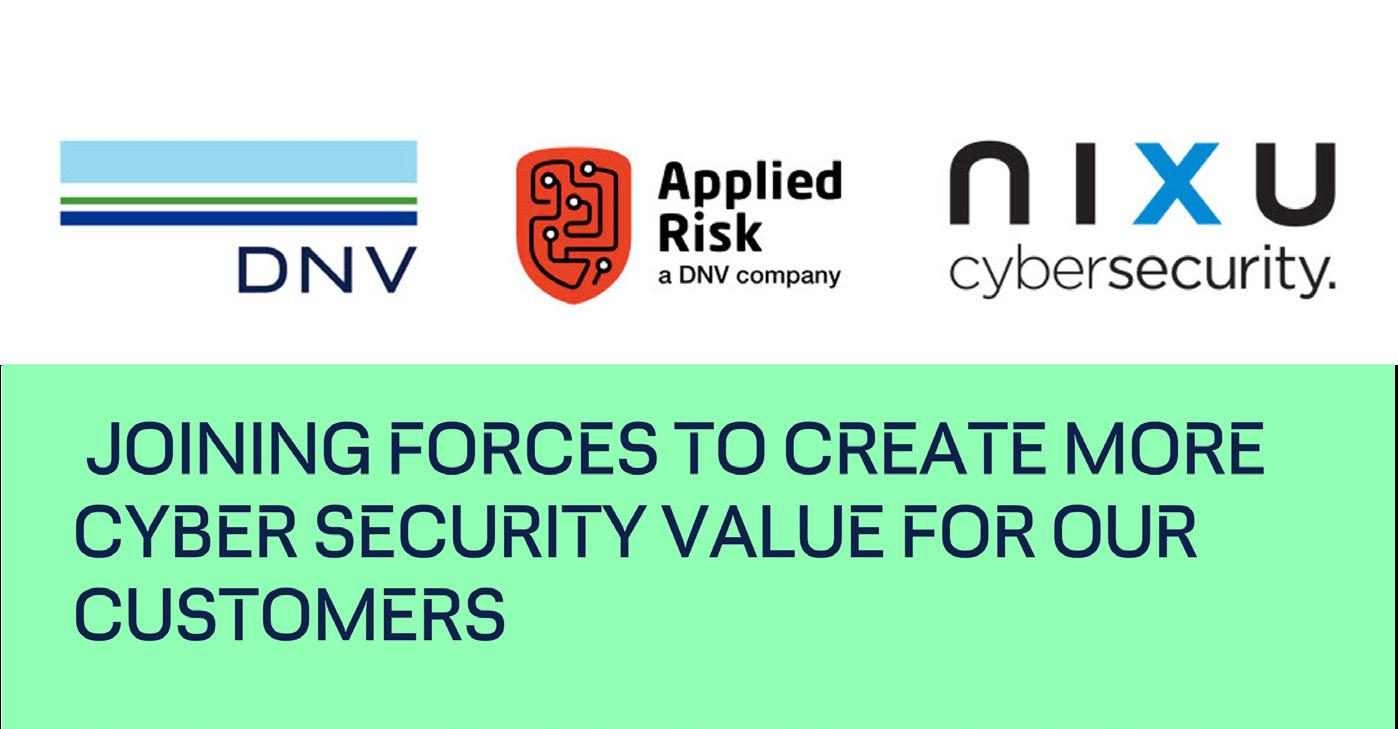
In today's interconnected world, where organizations rely on digital technologies to conduct business and deliver services, cybersecurity has become a critical priority. Cyber threats are constantly evolving, becoming more sophisticated and pervasive, posing significant risks to
organizations' data, operations, and reputation. By partnering with a trusted cybersecurity provider like Nixu Corporation, organizations can strengthen their security defenses, detect and respond to threats effectively, and safe-
The company has been named a leader in cybersecurity services by industry analysts and has received awards for its innovative solutions and contributions to the cybersecurity community.

guard their digital assets against cyber-attacks.
Nixu has established itself as a trusted partner for organizations seeking to enhance their cybersecurity posture and defend against evolving cyber threats.
References:
- Nixu Corporation Official Website: www.nixu.com
- Nixu Corporation Cybersecurity Services: www.nixu.com/services
- Nixu Corporation Recognitions and Awards: https://www.nixu.com/about-nixu/ recognitions-and-awards
- Customer Cases: www.nixu.com/cases
15
Remi Eriksen, Liv Hovem, Teemu Salmi, Jari Nisk


Knowledge-Based Ocean Health – Åkerblå Group As
As a DNV company
Good fish health, fish welfare and a good environment are necessary prerequisites for a profitable and sustainable production of farmed fish.
TEXT: NINA IVARSEN
Åkerblå is a company that focuses on knowledge-based ocean health, and their approach to ocean health is based on scientific research and data collection to understand and preserve the health of the marine environment. Knowledge-based ocean health refers to an approach that uses scientific knowledge, data and evidence to understand the state of the marine environment, identify threats and challenges, and develop effective measures to preserve and improve the health of the ocean and its ecosystems.
Be open about data, analyzes and decision-making processes to promote trust and commitment among stakeholders.
Åkerblå aims to use this approach to drive sustainable ocean management and contribute to the conservation of marine resources. The importance of knowledge-based ocean health lies in the
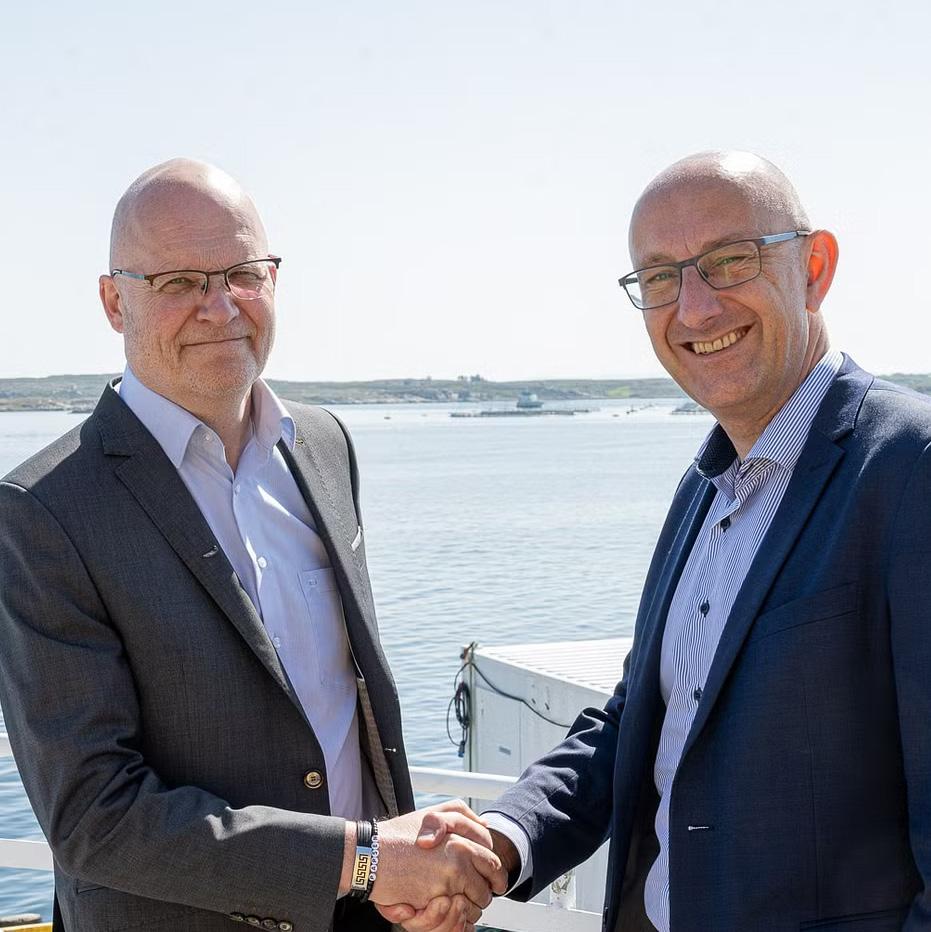
need to understand the complex relationships in the marine environment, identify threats such as pollution, climate change, overfishing and loss of biodiversity, and develop targeted measures to protect and restore the health of the ocean.
By basing decisions and actions on scientific knowledge and evidence, one can ensure that the management of marine resources is sustainable and takes longterm environmental, economic and social considerations into account.
References: Crowder, L. B., & Norse, E. A. (2008). Essential ecological insights for marine ecosystem-based management and marine spatial planning. Marine Policy, 32(5), 772-778.
CEO Roger Sørensen (left) in Åkerblå will now become part of DNV after the world-leading Norwegian company takes over the Frøyabased group. To the right, CEO. Geir Fuglerud in Supply Chain & Product Assurance at DNV.
PHOTO: Åkerblå Group
16
Åkerblå website
DNV HAS ENTERED INTO AN AGREEMENT TO ACQUIRE ÅKERBLÅ GROUP, A LEADING NORWEGIAN COMPANY IN MARINE HEALTH, TO STRENGTHEN ITS SERVICE PORTFOLIO IN AQUACULTURE AND OFFSHORE RENEWABLE ENERGY IN EUROPE
Åkerblå Group is a knowledge-based company that assists customers with sustainable operations in the ocean through interdisciplinary expertise in fish health, environment and technical services. The company has offices and
laboratories in Norway, Great Britain, Iceland and Lithuania.
“This agreement is very important for DNV's commitment to knowledge-driven solutions in aquaculture. Åkerblå Group complements many of our services and adds considerable new expertise to DNV in life sciences. We look forward to being able to create increased value for our customers in aquaculture and renewable energy offshore both in and outside Europe”, says Remi Eriksen, CEO of DNV.
Åkerblå Group has over 300 employees in Norway, Great Britain, Iceland and Lithuania, and includes six companies: Åkerblå, a leading knowledge-based company in marine health; Coastal plan, specialist in construction projects in the coastal zone; Scandinavian Nature Monitoring, a provider of freshwater ecosystem monitoring with a focus on salmon populations; Ocean Ecology, provider of marine ecological surveys and consultancy services for projects in coastal and offshore environments; Blár Akur, service provider in fish health for sea and landbased aquaculture facilities in Iceland, and Consulting Biologists, service provider in aquatic biology (organisms and ecosystems in aquatic environments) with specialist expertise in water quality, freshwater ecology and fish biology.
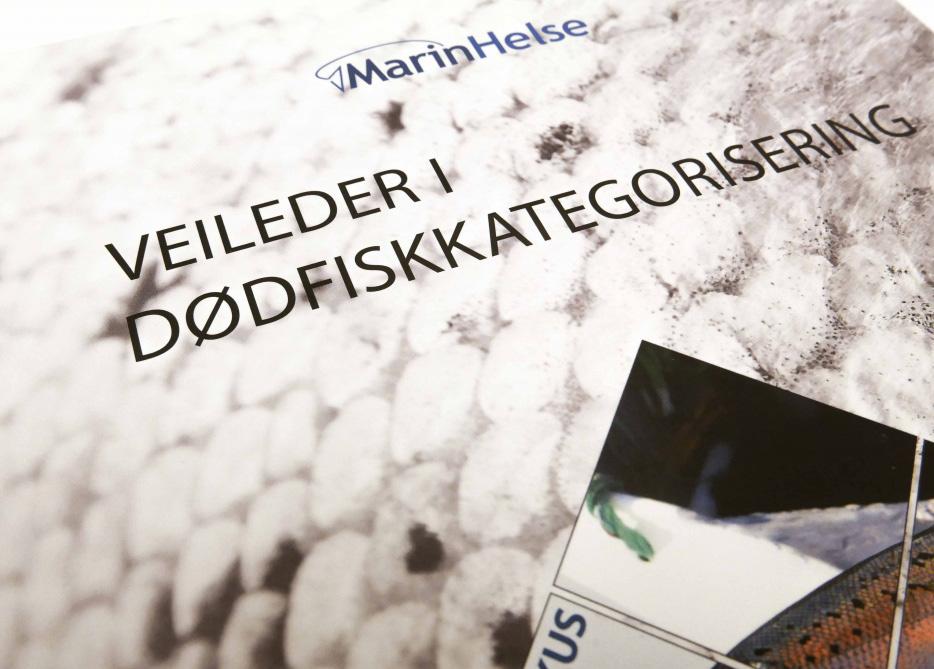
References: Pressemelding Åkerblå Frøya/Høvik, Norway, 28 June 2023
17
DNV 's Acquisition of Imatis AS
Scandinavian provider of software and information technology specially developed and adapted within the healthcare industry.
TEXT: NINA IVARSEN
The acquisition of Imatis AS by DNV represents a significant development in the digital health landscape, as it brings together two companies with complementary strengths and capabilities.
DNV's deep industry knowledge and global reach, combined with Imatis' innovative technology solutions, create a powerful synergy that can drive digital transformation in healthcare.
By integrating Imatis' digital health platforms with its existing services, DNV aims to offer comprehensive solutions that enhance patient care, improve operational efficiency, and enable better decision-making in healthcare organizations.
DNV's strong reputation for quality assurance and risk management, coupled with Imatis' expertise in digital health solutions, enables the combined entity to deliver end-to-end services that address the evolving needs of the healthcare industry.

By leveraging Imatis' technology platforms, DNV can enhance its offerings in areas such as telemedicine, patient flow management, and digital patient engagement, providing healthcare providers with tools to deliver more personalized and efficient care.
Flow- Patient and resource management.
All hospital departments receive and generate data, from ambulance to accident and emergency (ER), surgery and outpatient wards, to cleaning, orderly and caretaker services. All this information is business critical.
By combining their resources and expertise, DNV and Imatis can develop new solutions that address key challenges in healthcare delivery, such as improving
18
access to care, enhancing patient outcomes, and optimizing resource utilization. This partnership has the potential to transform the way healthcare is delivered and experienced, paving the way for a more connected, efficient, and patient-centric healthcare system.
Connect - Mobile communication and alarm management.
A hospital is a workplace unlike any other. A huge workload, limited time and great distances between wards creates a working environment that is not only stressful but also represents a risk of human error. Crucial information is often transported by hand, with no immediate insurance that it reaches its goal in time – and in the right hands.
Combining their strengths and capabilities, DNV and Imatis have the opportunity to drive innovation, create value for customers, and shape the future of healthcare. This acquisition underscores the importance of collaboration and
technology in advancing healthcare delivery and improving patient outcomes. As DNV and Imatis work together to develop and deploy cutting-edge digital health solutions, they are poised to make a significant impact on the industry and contribute to the transformation of healthcare on a global scale.
Visit - Check-in, payment and queue management.
Appointment
scheduling is a complex business in healthcare. The date, time, location, and the order of appointments must be carefully orchestrated when planning and optimising the treatment of hundreds of people every day.
A single change to a schedule can have significant knockon effects.
References:
- https://www.dnvgl.com/news/dnv-glacquires-imatis-as-to-accelerate-digitalhealth-transformation-205611 2.
- DNV Healthcare Solutions: https://www. dnvgl.com/assurance/healthcare/index. html
- https://dnvimatis.com
Customers
St. Olavs hospital
St. Olavs hospital uses the DNV Imatis solution as a common platform for alarms, alerts and messaging. For St. Olavs hospital, it includes more than 5 million conversations, alarms and illness notifications annually across 3500 telephones.The messaging server is a tightly integral part of the hospital’s work processes. It integrates with everything from patient alerts, telephony, directory services, pneumatic tube systems, AGVs and nurse calls. Further emergency alerts, safety alarms and duress alerts to technical and engineering systems.
Østfold Hospital Trust
The hospital was one of the first in Norway to implement a quiet working environment, where the audio signals from patient alerts were turned off. DNV Imatis’ platform is used for all integration and messaging exchanges. The platform is fully integrated with more than 50 areas, including clinical and administrative systems such as EHR, lab systems, orderly services, cleaners, patient alerts, telemetry, wireless duress alerts and positioning solutions.
Role-based mobile phones have been introduced at the hospital for receiving patient alerts. Patient alert notifications are displayed on big touch screens in the ward. Whiteboards and mobile phones are also used for allocating rooms to patients.
Royal Adelaide Hospital
South Australia’s largest hospital. With over 800 beds, the RAH provides tertiary health care services for South Australia and provides secondary care clinical services to residents of Adelaide’s city centre and inner suburbs. It’s also the premier University Hospital in South Australia. After a 2009 visit from Australian Health ministers to St. Olav Hospital in Norway, it was decided to build a digital hospital based on best practices from Norway.
The scope for new Royal Adelaide Hospital was to integrate communication, telecom, workflow, clinical applications, service management, patient bedside TV, room displays, patient flow digital whiteboards, self-check in services, signage solutions, fire alarms, automated guided vehicles for goods transport & management, nurse calls & alarms; into one single, unified system.
19
Untapped
and Underestimated:
Workforce that has Different Cultural Backgrounds


20


Employers today face high labor demand with insufficient domestic talent supply. This accelerating skills gap compels innovative recruiting approaches and wider talent pipelines. Many now recognize the promise within global migrant and immigrant talent pools.
TEXT: NINA IVARSEN
Forward-looking multinationals lead in sourcing skills globally, implementing best practices for inclusion that welcome international applicants. Their integrated workforces better represent diverse customer values and outlooks, driving superior innovation.
DNV is a global company, and we see that we get colleagues, either remotely or in our team, who come from different countries and cultures. VEFF feels that this is not problematic, but it is important that we have a common understanding of leadership and company culture.
The distance can be long and challenging, both physically and culturally. It is important that this is handled, and for many this works very well. It is also important that HR in the line knows the local rules and legislation where they have employees. Salary negotiations or salary allocations can also be very different, and you must seek local knowledge to ensure that you are compliant.
While global hiring alone cannot fully address immediate talent deficits, it allows employers to access skills where demographics and job preferences align.
Successful integration of these multicultural teams creates sustainable advantages, delivering talent shortage relief now while reaping additional longerterm benefits.
The
top 5 markets for finding skilled talent are the United States, Australia, Israel, Singapore, and 51% of European consumers say they are more likely to buy from a company that is actively hiring refugees.
A challenge that comes up every now and then is employees who have managers who sits in countries other than where they work.
“Automation, migration, and changes in the working-age population are reshaping labor markets in Euroe, the Middle East, and Africa. There is no shortage of opportunity – depending on what you need and where you look”.
– Marceline Beijer, Global Brand Leader PRO Talent Solutions & Senior Vice President, EMEA
© iStock © iStock 21
Competitive – Navigating the Intersection of Green, Tech, and Innovation
 TEXT: NINA IVARSEN
TEXT: NINA IVARSEN
Competitive Drivers
Amid economic uncertainty and intensifying competition for talent, organizations must take decisive actions to attract and retain top talent while advancing their sustainability commitments.
Employees today are increasingly seeking purpose and meaning in their work, flexible arrangements that integrate with their lifestyles, opportunities to continuously develop new skills, fair pay for fair
work, and leadership that cares about more than just profits. Today, organizations must demonstrate their stances on social, political, and environmental issues to stand out.
By investing in people and communicating their values and commitments, companies can gain a competitive edge.
DNV has demonstrated that as a company we want to look after our employ-
ees and share profits with everyone.
VEFF feels that our Profit Share program is a good program if we compare it to other global companies.
We could imagine that the model was even flatter, and that employees in all salary groups received a multiplication of payment for good results. People experience that only those above salary group 10 get 1.5 times paid if they get a 4 rating as MIP, or 2 times if you get a 5
22
Drivers

rating. This could have been more fairer if the MIP rating paid out for all salary groups, says Nina Ivarsen.
A People-Powered Green Transition is Important for Employees
The advancement of the green transition continues and the impact on people, prosperity, and the bottom line is taking center stage. Investing in people is not just a choice; it’s a necessity. As the
demand for green jobs surges, companies need workers with the skills to execute net-zero strategies across business functions.
Employees don't just want fair wages and bonus schemes. They also want to work in a greener environment and employees are concerned that the company they work for is involved with the green shift. The challenges are to carry out the drastic change in our everyday life. We
install solar panels on the office roofs, and we are encouraged to drink our coffee from cups and not paper mugs. But what else can we do and are we doing enough? VEFF will continue to work for a good physical and mental environment.
New candidates that apply for a job in DNV are now heavily considering the company’s environmental performance before accepting a job offer.
A recent ManpowerGroup study found that 62% of workers check the company’s environmental reputation. In addition, evidence of clear action on environmental issues (60%) is now a deciding factor for many when choosing between job opportunities.
60% of workers say they want to see employers take clear and visible action to address environmental issues.
The global green business transformation will be the #1 job creator in the next five years.
Within the last year, 49% of global consumers opted to pay a premium for sustainable products. Gen Z takes the lead in demonstrating a strong preference for sustainability, with 75% of Gen Z individuals saying when it comes to making purchases, prioritizing sustainability outweighs brand considerations.
References: ManpowerGroup Green Workforce Survey, October 2023
© iStock 23
Tech Advancement – Technology is a powerful ally
 TEXT: NINA IVARSEN
TEXT: NINA IVARSEN
Tech Advancement
As generative AI evolves at a rapid pace, experience tells us that technology has proven to be a powerful ally, augmenting rather than replacing human capabilities. Harnessing the potential of AI to drive growth and productivity gains will require companies to prioritize people.
Let's help influence AI development in DNV. All agreements such as “særavtale” and main agreements “Hovedavtaler” must be updated so that AI and our human working capital are reflected side by side. AI should not take our jobs but do the simple jobs so that we can become more efficient at the challenging tasks.
The goal should be to enable people to connect with others, build meaningful relationships, and innovate/deliver in creative and ethical ways, even as technology permeates their work.
About
six-in-ten Americans believe AI will have a major impact on workers generally, but only 28% believe it will have a major effect on them personally.
Putting People at the heart of AI
The rise of AI is already reshaping the workplace. In response, leading companies and governments are at the forefront, pioneering innovative methods that place people at the heart of designing and implementing AI systems –approaches that directly incorporate workers’ needs, abilities, skills, and well-being.
The pivotal role of people to responsibly shape AI is now clear. And policy frame-
As we embark on new ways of working, there is a dual challenge - workplaces must be digitized, but also humanized.

works must evolve to support this central tenet: workers themselves can and must help steer the trajectory of AI transformation.
AI Will Create More Jobs Than It Destroys
Technological advancements create opportunities for people to do more meaningful work, provided they have the right skills.
© iStock 24
Nearly 3 in 4 of organizations (71%) are currently or actively planning to use conversational AI in their recruiting process. A majority of employers (58%) believe AI & VR will have a positive impact on their organization’s headcount in the next two years.
As businesses learn to adapt and change along with AI, humans will power the future of work, as they upskill and learn how to work with, not against, modern technologies. People must shift their perspectives to view AI as a chance to augment their technical knowledge and professional capabilities. DNV are now using Copilot for Microsoft 365 Apps.
References:
AI in Hiring and Evaluating Workers: What Americans Think – Pew Research Center

INDIVIDUAL CHOICE

– The rise of career consumerism
TEXT: NINA IVARSEN
Individual Choice
Centered around the “consumerization of work,” a new employer-employee relationship has emerged where people expect to “consume” work much like they do other aspects of life — on their own schedules and in ways tailored to their individual needs.
Just as consumers select products and services that suit their lifestyles, workers now want to dedicate themselves to organizations committed to their careers, well-being, and aligned with their personal values. Organizations must adapt to this workforce desiring greater flexibility, customization, and alignment with
their personal priorities as people seek employment that allows them to integrate their jobs seamlessly with the rest of their lives.
The Me Economy
Much like consumers in the “Me Economy,” today’s workers are looking for flexibility and autonomy as they prioritize work-life balance.
Candidates report the most desirable workplace benefits to be a four-day work week (64%), the ability to choose their start and end times (45%) and flexibility to work from home if needed (35%). With many companies advocating for a return to in-person office work, there is a widening gap between employees’ expectations and employers’ desires.
Eight in 10 chief human resources officers (CHROs) from Fortune 500 companies have no plans of decreasing remote work flexibility in the next 12 months.
As the growth of remote work blurred the lines between home and work, an increasing number of countries are considering “Right to Disconnect” laws, which protect employees from obligations to respond to work communications outside of regular business hours.
Nearly 1 in 5 (18%) would consider less paying exchange for more work-life balance.
References: What Workers Want: From Surviving to Thriving at Work
25
Catalyst for Innovation and Creativity
TEXT:NINA IVARSEN
Fostering diversity, equity, inclusion, and belonging (DEIB) has developed from a moral imperative into a core business strategy. Companies embracing DEIB are realizing two key advantages.
Innovation Upswing: Diverse teams bring broader perspectives, unlocking creativity. Organizations that champion inclusion better reflect customer diversity, increasing market relevance.
“In many companies, new ideas are met not with open minds but with time-consuming layers of evaluation”.
Talent Magnetism: Today’s top talent increasingly prioritizes workplace inclusion when choosing roles. Companies perceived as having diverse and equitable work cultures have a competitive edge in attracting skilled employees. Equity and belonging boost retention, saving turnover costs.
Companies with high levels of diversity were 39% more likely to outperform their peers with lower diversity representation.(Source: Diversity Matters Even More – McKinsey)


Organizations that foster a culture of innovation and creativity are better positioned to adapt to market dynamics, seize opportunities, and stay ahead of the curve.
Unleashing the Power of Creative Thinking
Innovation and creativity are essential drivers of progress and success in today's rapidly changing and competitive world.


The data shows work cultures that maintain diversity, ensure equity, promote inclusion, and cultivate belonging are better positioned to tackle new challenges in the modern era.
There is a perception gap. While 68% of leaders say their business provides an inclusive environment, only 36% of their employees agree.



Corporate social responsibility is part of DNV’s identity as we strive to fulfill our purpose to safeguard life, property, and the environment.





© iStock 26
“Money doesn’t necessarily stop people from being creative, but in many
situations,
it doesn’t help”.
Innovation and creativity are a factor or element that stimulates and accelerates the generation of new ideas, solutions, and breakthroughs. It serves as a spark that ignites the creative process and fuels innovation within individuals and organizations.
This catalyst can take various forms, such as a supportive work environment, diverse teams, open communication channels, and a culture that values experimentation and risk-taking.
Importance of Creative Thinking in Driving Innovation
Creative thinking is the foundation of innovation, as it involves generating novel ideas, exploring new possibilities, and challenging conventional wisdom. By embracing creative thinking, individuals and organizations can break free from routine patterns of thinking, discover innovative solutions to complex problems, and create value in unique ways.
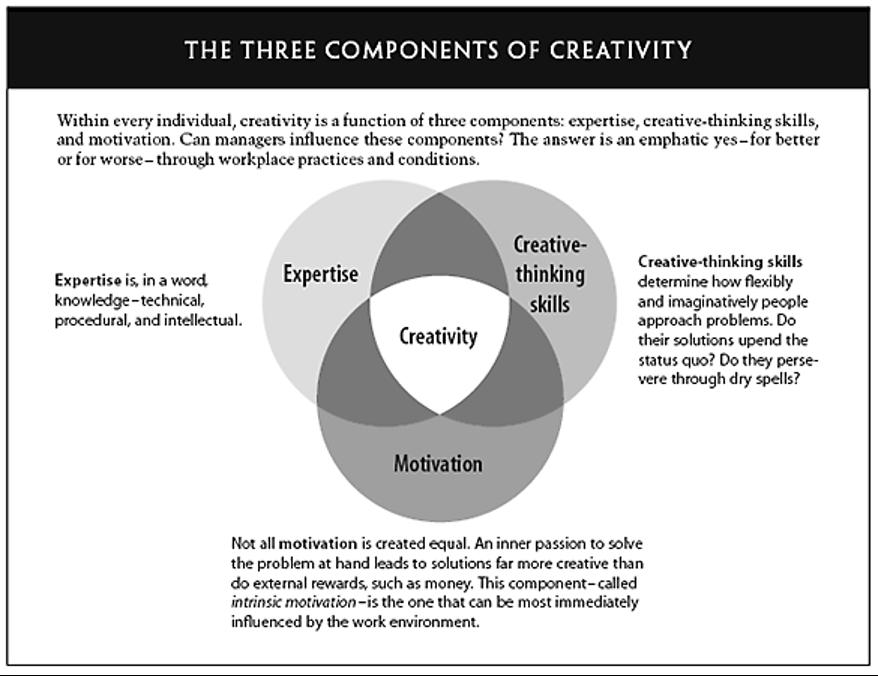
Strategies for Unleashing the Power of Creativity
To unleash the power of creativity and drive innovation, individuals and organizations can adopt the following strategies:
Encourage Divergent Thinking: Encourage individuals to explore multiple perspectives, think outside the box, and generate a wide range of ideas without judgment or criticism.
Foster a Culture of Experimentation: Create a safe space for experimentation, where individuals are encouraged to take risks, learn from failures, and iterate on their ideas to drive innovation.
Embrace Diversity and Inclusion: Build diverse teams with varied backgrounds, experiences, and perspectives to foster creativity, collaboration, and innovation through the exchange of different ideas and viewpoints.
Provide Resources and Support: Equip individuals with the tools, resources, and support they need to pursue their creative endeavors, experiment with new ideas, and bring their innovations to life.
Creative thinking enables individuals to see beyond the obvious, connect disparate ideas, and envision new opportunities for growth and advancement.
Celebrate Success and Learn from Failure: Recognize and celebrate creative achievements, while also learning from failures and using them as opportunities for growth, reflection, and improvement.
“Creativity thrives when managers let people decide how to climb a mountain; they needn’t, however, let employees choose which one”.
As we navigate an increasingly dynamic and competitive landscape, the ability to harness the creative potential within ourselves and others will be key to unlocking new opportunities and shaping a brighter future for all.
References: 1. Amabile, T. M. (1998). How to Kill Creativity. Harvard Business Review. https://hbr. org/1998/09/how-to-kill-creativity
Sawyer, R. K. (2012). Explaining Creativity: The Science of Human Innovation. Oxford University Press.
27
Workplace Culture – Trust and Innovation
TEXT: NINA IVARSEN
The future of work is changing right before our eyes, from worker expectations and ways of working to demographics. Heavily influenced by Gen Z, the current “culture revolution” and new hierarchy puts mental health at the forefront — and leaders and managers in the spotlight.
Ultimately, organizations that keep up with cultural shifts around well-being and create psychologically safe, flexible environments will have the best chance of attracting and retaining talent.
Innovations –Edelmans Trust Barometer
The growing use of artificial intelligence such as machine learning, natural language processing, and generative AI.
The growing use of green energy such as biofuels and renewable natural gas, liquid hydrogen, and wind and solar power.
The growing use of genetically modified foods (foods that are derived from genetically modified organisms, commonly referred to as GMOs) such as drought-, pest-, and disease-resistant crops, faster-growing fish, and produce that has a longer shelf life.
The growing use of gene-based medical technologies such as mRNA vaccines, gene splicing, and gene therapy
Shaping the Employee Experience Around Individual Need
Consumer-grade personalization has entered the workplace. Employees now expect and demand greater customization across everything from benefits packages to AI- powered skills training to tailored career pathing and development opportunities unique to personal strengths and interests.
Forward-thinking
companies are using advanced analytics and feedback processes to hyper-personalize the employee experience and trust in inovations.
From personalized onboarding programs to customized skills training modules to benefit selection algorithms providing personalized recommendations, the employee experience is getting an on-demand makeover.
Scale points from the trust barometer
Resistant: I am very worried about this. I boycott products and services that incorporate these technologies and urge others to do the same.
Hesitant: I am concerned about this. I personally try to avoid using products and services that incorporate these technologies.
Comfortable: I am okay with this. I will use products and services that incorporate these technologies but won’t actively seek them out.
Enthusiastic: I am excited about this. I am looking to increase my use of products and services that incorporate these technologies.
Passionate: I am a big advocate for this. I am looking to increase my use of products and services that incorporate these technologies and actively encouraging others to do the same.
Platforms utilizing AI and machine learning can now identify specific skillsets and interests for each employee to
The world of work is changing more rapidly than ever before. Shifting Demographics, Tech Advancement, Competitive Drivers, and Individual Choice create both challenges and opportunities for employers. One constant, however, remains — megatrends, such as generative AI, automation, nearshoring, and green business transformation, will continue to accelerate.
28

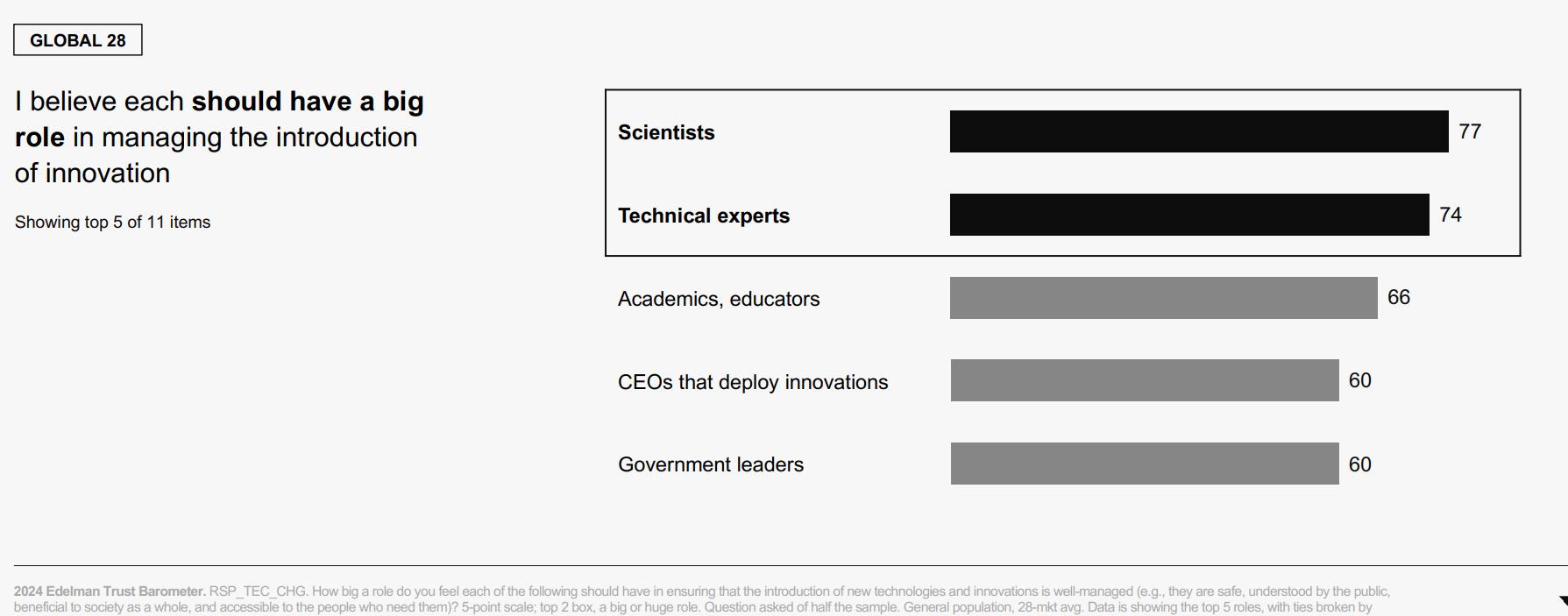

propose individualized career advancement plans aligned to personal aptitudes while still meeting business goals. Work tasks can even be dynamically customized based on individual working style
and productivity patterns, shaping the future of work in real-time.
60% of Gen Z employees expect their employers to provide personalized career development paths with regular
guidance, trained mentors, and transparent progression plans tailored to personal goals and trusted innovation.
Reference: Edelman Trust Barometer 2024
29
HUMEN RIGHTS DUE DILIGENCE
– THE GLOBAL COMPACT’S TEN PRINCIPELS ON HUMAN RIGHTS
TEXT: NINA IVARSEN
Human rights due diligence is a critical process that organizations must undertake to identify, prevent, mitigate, and account for how they address their impacts on human rights. It involves a systematic approach to assessing and addressing human rights risks and impacts associated with an organization's operations, products, and services. DNV do produce their own report, you can read about that in this article.
For VEFF the importance of human rights due diligence cannot be overstated, especially in today's globalized world where businesses operate in diverse environments with varying human rights standards and practices. By conducting human rights due diligence, DNV can proactively identify and address potential human rights risks and
impacts, thereby avoiding harm to individuals and communities, protecting their reputation, and ensuring compliance with legal requirements and international standards, such as the UN Guiding Principles on Business and Human Rights. We see this are important to employees all over DNV as the whistleblower hotline is increasingly used.
Best practices for implementing human rights due diligence include:
Top-level Commitment with the Board og Directors in DNV and EC
Securing leadership buy-in and commitment to human rights due diligence
from senior management to ensure adequate resources and support for the process. You can see that the Board og Directors and Group CEO and President Remi Eriksen have signed the report.
Multi-stakeholder Collaboration
Engaging with a diverse range of stakeholders, including civil society organizations, human rights experts, and affected communities, to gain insights and perspectives on human rights risks and impacts. In DNV a large survey was launched, and the group compliance team did multiple interviews true the global organization.
Risk Prioritization
Prioritizing human rights risks based on severity, likelihood, and the organization's ability to influence and address
Monitoring
Human rights due diligence
Annual Human Rights Report
Coordination of initiatives
Selection of suppliers
Due
and risk assessment of suppliers
Environmental
responsibility Risk assessments Due diligence Anti-corruption Data protection Export control & sanctions Reporting of misconduct
Operational
developments
political
impact
Business areas Group Compliance function Safety and Resilience function DEI function Procurement function Sustainability function Human Rights function Public Affairs function People function Coordination: Group Compliance (Human Rights Forum) • • • • • • Inclusive culture Diversity Fair access Policy • • • • • • • • • • Employee safety and resilience • • •
and benefits People policy • •
diligence
Compensation
Human Rights Forum per 31 December 2023 30
Figure: DNV’s
them effectively. This is a port of DNV’s risk metrics and are reported on every quarter.
Continuous Improvement
Establishing mechanisms for ongoing monitoring, evaluation, and improvement of human rights due diligence processes to adapt to changing circumstances and emerging risks.
By integrating human rights considerations into their business practices and decision-making processes, organizations can contribute to a more sustainable and ethical business environment that respects the dignity and rights of all individuals.
Reference:
DNV’s 2023 Human rights due diligence report Ruggie, J. G. (2013).
Multinational Corporations and Human Rights. WW Norton & Company
DNV’S 2023 HUMAN RIGHTS DUE DILIGENCE REPORT
DNV has a long history of managing its human rights risks, formalized in 2003 when we joined the UN Global Compact. We believe that adopting the Global Compact’s Ten Principles on human rights, labour standards, environmental sustainability, and anti-corruption is essential for longterm value creation.
These Principles guide our business strategy, our daily operations, our organizational culture, and our interactions with suppliers and customers. This report (referred to as the ‘NTA Report’) serves as our annual due diligence disclosure for the year 2023. It is a requirement under section 5 of the Norwegian Transparency Act
(‘NTA’) and pertains to DNV’s group of companies (‘DNV’). The reporting period spans from 1 January to 31 December 2023. In June 2023, we released our inaugural ‘Human Rights Report,’ which comprehensively covered our human rights-related activities up to that point.
In 2023, our primary focus has been to further streamline and operationalize our human rights due diligence process. Our aim is to effectively manage any adverse effects on human rights or decent work conditions. To achieve this, we have established internal policies, instructions, and processes that align with human rights laws and standards. Our 2023 compre-
hensive human rights due diligence assessment has revealed no potential significant risk or actual risk of adverse impacts related to DNV or our direct reporting companies.
Moving forward, we will continue to focus on areas with the highest potential risks related to human rights and decent working conditions. Our solid approach ensures that we uphold human rights related standards. For further insights, refer to the sustainability section of our Annual Report available at www.dnv.com.
31
THE PRODUCTIVITY PARADOX:
Navigating Human Potential and Advanced Technology

Productivity, what do we mean by that at DNV?
Employers around the world ranked Professional Development (40%), Clear Goals & Objectives (37%), Positive Work Culture (36%), Tech Efficiency (24%), Communication & Collaboration (22%) and Tech Adoption (20%) as more important drivers of productivity than In-Person Collaboration (19%).

Companies seeking to unlock latent productivity must first focus on finding the right blend of people and technology, enhancing workplace culture, and developing leadership.
TEXT NINA IVARSEN
32

The rise in remote work — and subsequent spike in productivity — seemed to be the answer.
More recently, the growth of AI is touted as the new top driver of productivity. However, its impact will largely depend on society’s reaction to and adoption of new AI technology.
As it stands, the more technologically advanced we’ve become as a society, the more productivity has declined.
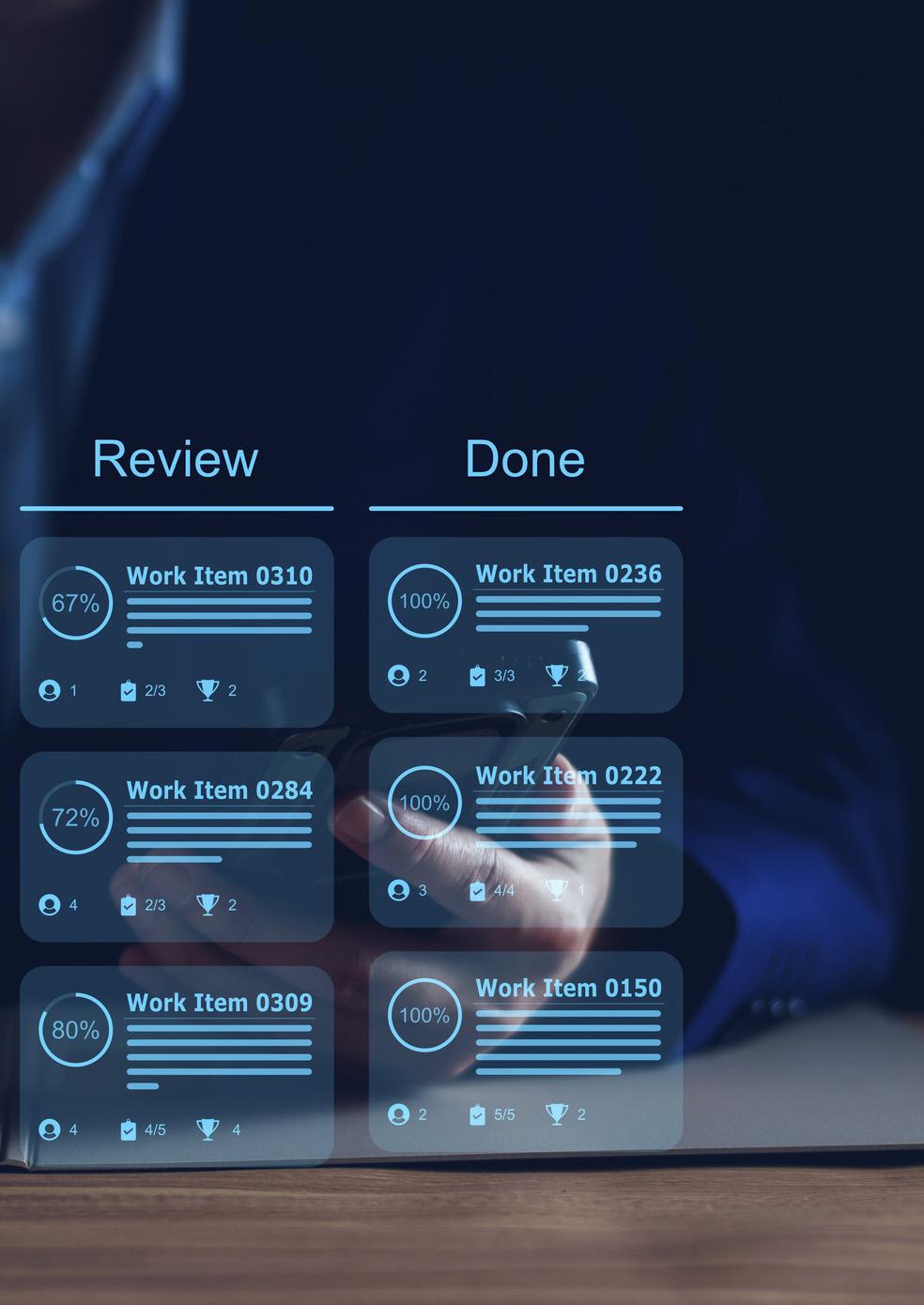
87% of workers said they are productive at work, but only 12% of managers agreed.
The intersection of human potential and advanced technology presents a unique opportunity to drive progress, innova-
tion, and transformation in today's digital age. As we navigate the complexities of a rapidly evolving technological landscape, it is essential to harness the power of human creativity, ingenuity, and collaboration to unlock new possibilities, solve complex challenges, and shape a more sustainable and inclusive future.
Synergy Between Human Potential and Advanced Technology
Human potential and advanced technology are complementary forces that, when combined, have the power to revolutionize industries, disrupt traditional paradigms, and drive exponential growth and innovation. Advanced technologies such as artificial intelligence, machine learning, robotics, and blockchain have the potential to augment human capabilities, automate routine tasks, and unlock new levels of efficiency and productivity.
At the same time, human creativity, critical thinking, emotional intelligence, and adaptability are essential qualities that drive innovation, inspire breakthroughs, and ensure the ethical and responsible use of technology for the benefit of society.
Role of Innovation in Maximizing Impact
Innovation serves as the catalyst that propels the synergy between human potential and advanced technology to new heights. By fostering a culture of innovation, organizations can empower individuals to think creatively, experiment with new ideas, and collaborate across disciplines to drive meaningful change and
© iStock 33

create value. Innovation enables us to push the boundaries of what is possible, anticipate future trends, and adapt to emerging challenges in a rapidly evolving technological landscape.
Through continuous innovation, we can harness the full potential of advanced technology to address pressing global issues, such as climate change, healthcare disparities, and economic inequality, and pave the way for a more sustainable and equitable future for all.
Unraveling the Mystery of Technology and Efficiency
Introduction
The productivity paradox refers to the phenomenon where advancements in technology do not always translate into significant improvements in productivity and efficiency in organizations.
Implementation Challenges
One of the primary reasons for the productivity paradox is the difficulty in
These are important reflections that we at DNV must undertake and for VEFF it is important that we understand the maturity of the organization to understand what synergy effects we get from efficiency improvement processes.
effectively implementing and integrating new technologies into existing workflows and processes.
Organizations may face resistance to change, lack of technical expertise, or inadequate training, leading to underutilization of technology and limited productivity gains. Another factor contributing to the productivity paradox is the mismatch between the expected benefits of technology adoption and the actual outcomes achieved. Unrealistic expectations, poor planning, and inadequate performance metrics can lead to disappointment and disillusionment with technology investments, undermining their potential to drive productivity.
The culture and mindset of an organization play a significant role in determining the success of technology adoption and its impact on productivity. Resistance to change, lack of collaboration, and siloed decision-making can impede the effective utilization of technology and limit its ability to drive innovation and efficiency.
Data Quality and Integration
Inadequate data quality, siloed data sources, and lack of interoperability between systems can hinder the ability of organizations to leverage technology for data-driven decision-making and process optimization. Without accurate and integrated data, organizations may struggle
Despite the widespread adoption of cutting-edge technologies such as artificial intelligence, big data analytics, and automation, many businesses continue to struggle to realize the promised benefits of increased productivity and performance.
to realize the full potential of technology to drive productivity gains.
Provide comprehensive training, change management support, and resources to help employees adapt to new technologies, embrace change,
and leverage technology to enhance their productivity and performance.
Invest in data quality management, data governance, and integration initiatives to ensure that organizations have access to accurate, timely, and integrated data to support data-driven decision-making and process optimization. We do this at DNV, and for several business areas we are the leaders of technological efficiency processes, even some “world class”.
References:
Brynjolfsson, E., & McAfee, A. (2014). The Second Machine Age: Work, Progress, and Prosperity in a Time of Brilliant Technologies. W. W. Norton & Company.
Mankiw, N. G., Romer, D., & Weil, D. N. (1992). A Contribution to the Empirics of Economic Growth. The Quarterly Journal of Economics, 107(2), 407-437.
Hybrid Work Is Just Work. Are We Doing It Wrong? - Microsoft
34
THE MANAGER MANDATE
– Mastering Continuous Transformation and The REAL model
(Recognise, Empathise, Acknowledge and Learn)
TEXT: NINA IVARSEN
The pandemic provided a crash course as managers pivoted to remote leadership overnight. Now as AI, automation, and sustainability reshape work, the onus falls on managers to guide a people- first transformation. As new green and digital skill requirements grow, managers must motivate their people while easing fears around displacement.
Managers also serve as the anchor steering organizational change. They must maintain engagement, inclusion, and well-being amidst shifts in work models, business needs and employee expectations.

36
VEFF experience that employees must use their own time to update their knowledge to solve tasks for DNV. We don't think that's right, and we want us as a company to be clearer about the time set for further development.
Now managers spearhead upskilling initiatives so people at all skill levels participate in the future of work. Top managers understand change succeeds when their people succeed.
The challenge in the future will be to update everyone's knowledge so that we all understand and know AI and the new work processes that we encounter.

55% of business leaders surveyed predict investments in green business transformation and Environmental, Social, and Governance (ESG) will surpass technology and other megatrends as the primary job creators in the next five years.
The transition is expected to create up to 30 million new green jobs globally by 2030.
Source: Future of Jobs Report - World Economic Forum
From Getting It Right, to Being REAL.
A GUIDE TO INCLUSIVE COMMUNICATION
PUBLISHED BY IMD BUSINESS SCHOOL
It’s vital that leaders take action when they hear non-inclusive language being used. The REAL model (Recognise, Empathise, Acknowledge and Learn) can help facilitate conversations on the impact language can have.
Recognise: Start the change journey by recognising how your words can impact others. Once you identify a negative comment, take a second to pause, regulating your internal response rather than just reacting. Indicate what you have noticed by using phrases such as ‘I noticed you said X.’
Empathise: Show your empathy and be willing to explore what might have caused a negative comment to be said. Try to avoid calling someone out, as this can facilitate a blaming culture. Instead, be curious and explore what was said by asking questions that enable the other person to feel safe to elaborate.
Acknowledge: Take the opportunity to understand people’s differences by acknowledging different points of view as they arise, regardless of whether you agree with them or not. Be accepting that the same communication can impact people differently, as this fosters connection.
Learn: Maintain a growth mindset as communication has many facets and is always evolving. Be prepared to explore assumptions that are just accepted as the status quo, as this demonstrates what it means to be an inclusive leader.
Inclusive leaders will solicit opinions from those different from themselves to ensure that their pre-existing assumptions and stereotypes don’t prevail.
Reference: Based on an article by Heather Cairns-Lee and Alexander Fleischmann
© iStock 37
ONSHORE VS. NEARSHORE VS. OFFSHORE
– A Strategic Discussion on Where to Employ People
TEXT: NINA IVARSEN
Disruptions during the height of the pandemic exposed vulnerabilities in global supply chains. As the world economy continues to recover, challenges have remained, including increasing sustainability, demand volatility, shipping disruption, lack of effective data gathering, and fluctuating fuel costs.
Companies must prepare now for future disruptions by building diverse supplier networks and talent communities.
To increase resiliency, manufacturers are relocating some manufacturing from China to other countries in the APAC region such as Vietnam, Malaysia, Bangladesh, India, and Taiwan.
Nearly half (48%) of companies say they are under increasing pressure to improve sustainability in the supply chain.
The decision to choose between onshore, nearshore, or offshore is a critical strategic consideration for businesses looking to optimize their operations and reduce costs.
We have compared and contrast onshore, nearshore, and offshore sourcing to help businesses determine the most suitable option for their specific needs.
Onshore sourcing refers to the practice of delivering services or business pro-
Each employment model offers distinct advantages and challenges, and understanding the differences between them is essential for making an informed decision. VEFF is often confronted with this dilemma in salary negotiations or when businesses in DNV want to cut costs.
cesses within the same country as the client organization. One of the primary advantages is proximity, which can facilitate easier communication, collaboration, and coordination between the client and the customer. Additionally, onshore sourcing often involves working within the same time zone, which can lead to faster response times and increased operational efficiency. However, onshore sourcing typically comes with higher labor costs compared to nearshore and offshore options, which may impact the overall cost savings for the client.
Nearshore outsourcing involves contracting services or business processes in a neighboring or nearby country. Nearshore outsourcing offers a balance between cost savings and proximity, making it an attractive option for businesses looking to leverage the benefits of sourcing while maintaining some level of geographic and cultural alignment. By choosing a nearshore sourcing, organizations can benefit from reduced labor costs compared to onshore sourcing while still enjoying advantages such as overlapping time zones and cultural sim-

ilarities that can facilitate smoother collaboration and communication.
Offshore sourcing, on the other hand, involves contracting services or business processes in a different country, often located in a geographically distant location. Offshore sourcing is known for its potential to deliver significant cost savings due to lower labor costs in countries with a lower cost of living.
However, offshore sourcing also presents challenges related to cultural differences, language barriers, and time zone discrepancies, which can impact communication, collaboration, and overall operational efficiency.
Despite these challenges, many organizations choose offshore sourcing for its cost-effectiveness and access to a global
© iStock 38

talent pool like DNV have done in Pune and Gdynia.
While onshore sourcing offers proximity and ease of communication, nearshore sourcing provides a balance between cost savings and geographic alignment, and offshore sourcing offers significant cost advantages but may require additional effort to manage cultural and logistical challenges.
By weighing the pros and cons of each sourcing model, businesses can make an informed decision that aligns with their strategic objectives and operational requirements.
Reference: Lacity, M. C., & Willcocks, L. P. (2016). Global outsourcing and offshoring: An integrated approach to theory and corporate strategy. Cambridge University Press.
The decision to choose between onshore, nearshore, or offshore sourcing should be based on a careful evaluation of the specific needs, priorities, and constraints of the business.
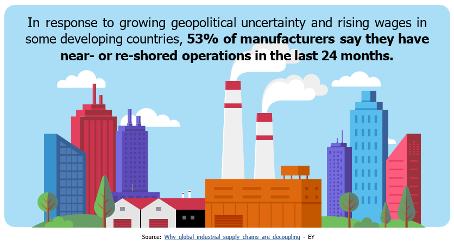
39
Facts and history – Tariff agreements
TEXT: ELLEN MARGRETHE PHIL KONSTAD
The first Tariff agreement in Norway is from 1851 and was a local agreement between the typographers and printing offices in Christiania (Oslo).

© iStock 40
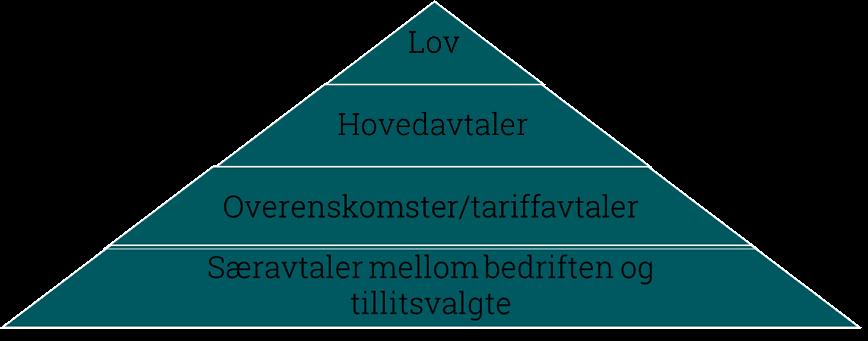
Facts:
A “Tariff agreement” is a collective bargaining agreement are mutually binding and determine duties and rights for the parties. (For us, DNV and VEFF). The agreement must be established in writing. To be a collective agreement, the agreement must apply generally to an indefinite number of employees within the area covered by the collective agreement.
It may govern areas such as working hours, shift work and overtime work, notice periods, holidays, pensions, leaves of absence, co-determination, redundancies, work clothes and more.

The first agreement in DNV was signed first of March 1981 and was the result of several years of negotiations between DNV and VEFF. 30 years later DNV joined NHO and VEFF became a part of YS/Parat. This was done so that DNV also could join the AFP pension scheme.
By being part of national employee (YS / Parat) and employer (NHO) organisation we are also part of the general agreement (Hovedavtalen).
A Tariff agreement has normally a duration of 2 years. The current agreement is from January 2019 and lasted until December 2020, and as such should have been renegotiated in the autumn of 2020. Due to the pandemic, it was agreed to prolong the agreement.
This fall the unions at DNV will renegotiate the agreement from 2019.
Topics to be addressed will normally be work time / travel time, senior schemes, and insurance. The actual areas to be discussed will only be made known after the claim has been sent to DNV.
Why do we need a Tariff agreement?
The law governs the minimum work conditions that apply to all workers, such as the number of vacation days a year and minimum overtime compensation.
Additional days of or higher compensation can either be regulated in an employer manual (OP) or in the tariff agreement. If the benefits are only in the employer manual, the management can remove or change it one-sided with no negotiations.
If a benefit is in the Tariff agreement, it may only be removed as part of the negotiations for a review of the agreement, e.g. it last for the duration of the
agreement and can only be removed after negotiations with the employees.
Strike
In modern times, the employee organisations have a significant influence on the use of strikes, and the employees' right to strike is closely linked with the right to be organised in a union.
In Norway a strike is a legal means of fighting if the Tariff negotiations are not successful, and an agreement are not made. There are nevertheless some statutory conditions that must be met for a strike to be lawful.
Before a legitimate strike can be initiated, there will have been negotiations between the parties, and mediation in accordance with Chapter 3 of the Labor Disputes Act must have been attempted. There has never been a strike in DNV, but we have been to the “Riksmegler” several times. Last time in 2008 where VEFFs arguments for a higher salary adjustment was met.
41

Why the Present – and Future –Workforce will
TEXT: NINA IVARSEN
When the pandemic hit, millions of women left the workforce, which many feared would take decades to recover from. However, in just three years, employment levels for women are back to where they were pre- pandemic.
Women are leading the post-pandemic recovery. Globally, the workforce participation rate for women is just over 50%.
Specifically, among 25-54-year-old women, the labor force participation rate has hit record highs. This age bracket has jumpstarted brand new careers, advocated for better pay and benefits, and taken advantage of remote opportunities. Despite these gains, there is an urgency to ensure women are thoroughly represented in candidate pools for growth jobs.
Across the globe, women face inferior income opportunities compared with
be Female-fueled
men. Women are less likely to work for income or actively seek work. The global labor force participation rate for women is just over 50% compared to 80% for men. Women are less likely to work in formal employment and have fewer opportunities for business expansion or career progression. When women do work, they earn less. Emerging evidence from recent household survey data suggests that these gender gaps are heightened due to the COVID-19 pandemic.
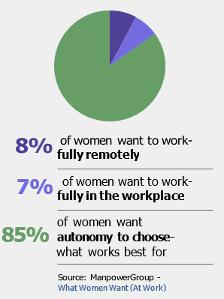
Women are half of the world’s total working population yet hold less than one third of managerial and leadership positions.
Despite a Tech Talent shortage, women make up less than a third of the world’s workforce in technology-related fields.
Reference: International Labour Organization (ILO). Data retrieved from World Bank Gender Data Portal (SL.TLF.ACTI.ZS) them
© iStock 42
MEMBERSHIP BENEFITS
Being a member of a local Norwegian union like VEFF provides several benefits to workers.
TEXT: LIN B. KARSTEN
Unions provide legal support and representation to workers who face issues such as discrimination, harassment, or unfair treatment in the workplace. In Norway, unions have a strong presence and are an integral part of the country’s labor market. They work closely with employers and the government to ensure that workers’ rights are protected and that they receive fair treatment.
By being member of a union, workers can also participate in various activities and events that promote social and political causes that are important to them.
Furthermore, being a member of VEFF provides a sense of community and support. Workers can connect with others who share similar experiences and challenges in the workplace and can receive guidance and advice from union representatives and fellow members.
Overall, being a member of a VEFF can provide numerous benefits to you and your colleagues, including better wages, benefits, and working conditions, legal support and representation, opportunities for social and political engagement, and a sense of community and support.
Here are some links and explanations of what VEFF and PARAT are. Some of the information is in Norwegian. If you have any questions or need assistance to translate, please let us know at veff@dnv.com

JOIN VEFF TODAY!
What is VEFF:
• VEFF union is only for employees in DNV.
• VEFF is an organization that protects the interests of all employees in DNV.
• VEFF covers all professions and business areas within the group.
• VEFF has good cooperation with management and the Country Chair.
As a member of YS and Parat, you will get access to many membership benefits.
Referring to one member’s experience: “I almost lost my job due to reorganisation, it was VEFF that helped me and supported me to get into the position I have today. Not sure if I would have been in DNV anymore without the VEFF support”.
What is PARAT:
As a member of Parat, you have access to many membership benefits. As a member, you also receive two hours free legal assistance in private cases every year.
If you recruit a new member, the new member will get 3 months free membership, and you will get a giftcard worth 500 nok. Use this QR code to register new members:
This
Membership benefits
Membership benefits
43
Lin B. Karsten, Deputy Chair VEFF
is Parat
YS
Parat

VEFF Hvordan bli medlem av VEFF • Kontakt veff-kontoret: VEFF@DNV.com • Du finner også informasjon på www.veff.no How to become a VEFF member • Contact the VEFF office: VEFF@dnv.com • You will also find useful information on www.veff.no WE VALUE FLEXIBILITY AND WORK-LIFE INTEGRATION A WIN WIN FOR ALL!

 HOVEM INTERVIEW CEO, ACCELERATOR
HOVEM INTERVIEW CEO, ACCELERATOR


























 TEXT: NINA IVARSEN
TEXT: NINA IVARSEN

 TEXT: NINA IVARSEN
TEXT: NINA IVARSEN
























